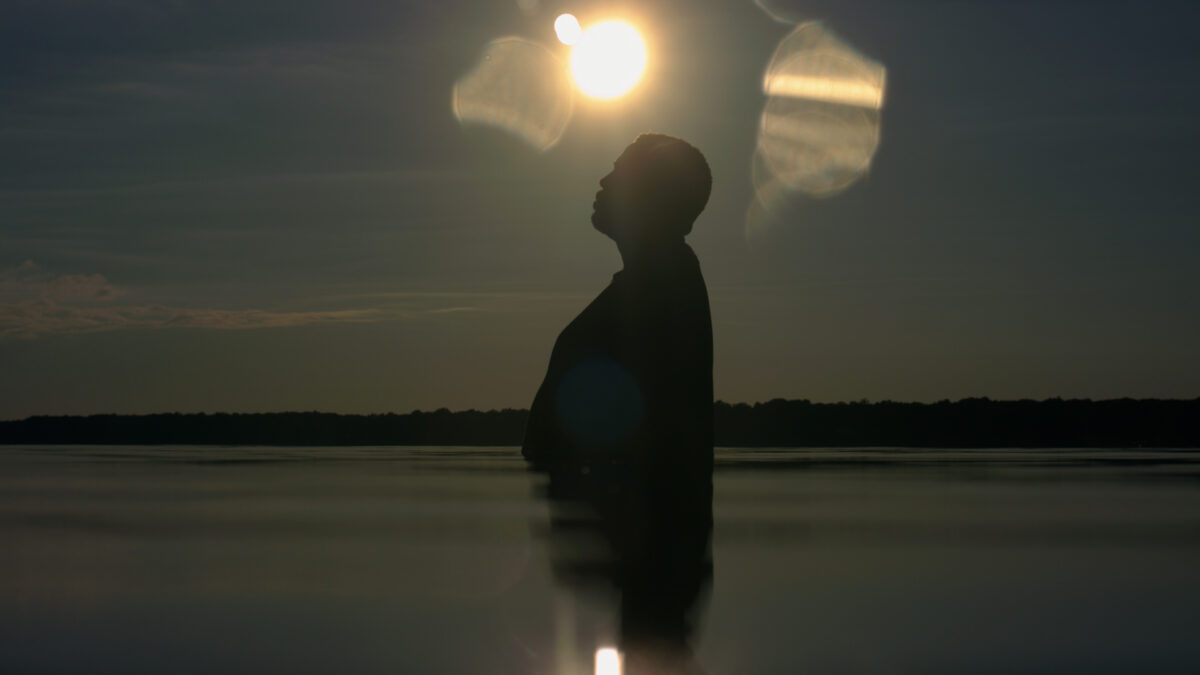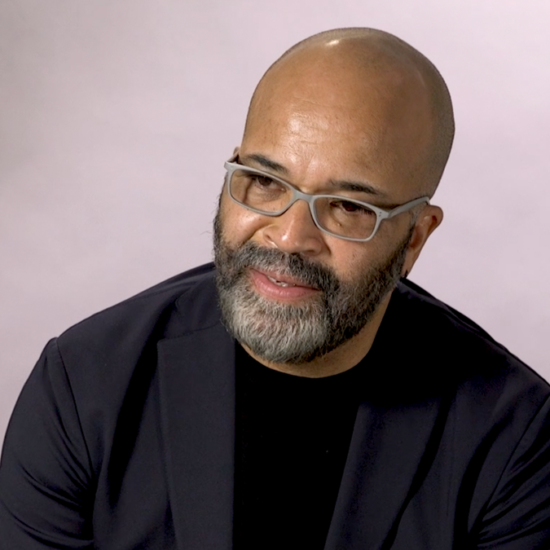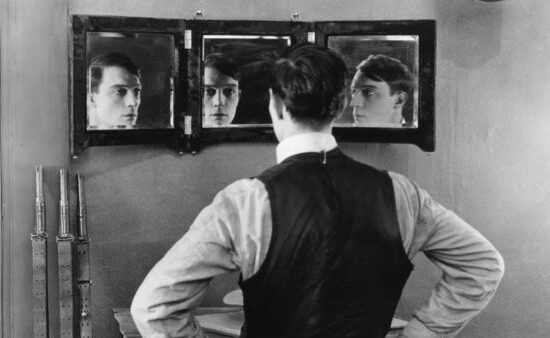
Senghor Reid moves like water. His paintbrush glides across the canvas, leaving canals of ocean blue that lead the viewer into his heart and soul.
As the Detroit artist paints depictions of water, rolling in gentle waves and softly bubbling at the surface, he inadvertently becomes it. His process is fluid. His nature is calm, and he nourishes the art community in which he serves.
Dipping a toe or submerging himself in the cooling waves of Lake Michigan is part of his creative process. He considers it a pilgrimage, a return home to himself as he reconnects with the water that comprises his human body.
We see this homecoming ritual in Senghor Reid: Make Way For Tomorrow as the artist plunges himself underwater and emerges as if reborn.
His piece “Gray’s Anatomy IV,” catches Reid in an introspective moment where he examines his relationship with water. What percentage of each organ is made up of water? How does water help his brain and liver function? Is he more prone to fear when he’s not properly hydrated?
This self-portrait of the artist, as he buttons his shirt, reads like a museum exhibit with Reid as the featured work of art and text bubbles explaining the relationship between these reservoirs within.
In other works, like his painting “This is my Desire,” Reid’s connection with water is less subtle. This piece shows him controlling the tides of Lake Michigan with his mind. Instead of the lake’s waves engulfing him, this sacred ancestor stands beside him as if takes form in his hands.
Reid often paints self-portraits but his paintings of strictly water, like his Distilled series, can still be seen as reflections of himself.
In Senghor Reid: Make Way For Tomorrow, Reid mentions how being a “city boy” gave him few chances to commune with nature. Greenspace, forests and bodies of water can feel out of reach for Detroiters who spend the majority of their time in the city. Despite having a downtown that borders the Detroit River and the Great Lakes in their backyard, Black Detroiters like Reid often feel separated from this life-giving resource.
Environmental racism has historically left people of color in the closest proximity to polluted soil and waterways, and institutionalized racism works to keep us in the confines of “urban” life.
But Reid is unafraid to venture out, and he wouldn’t have chosen to be born in any other city. His yearning to be closer to nature fuels his work as he finds texture, color and movement in natural landscapes.
Reid was born and raised in Detroit, and while water was not always present as a healing modality in his life, art was. His mother, Shirley Woodson is an award-winning painter and arts educator who continues to paint into her 80s. Reid and Woodson have even shared studio space for over 20 years. In 2021, Woodson was named the 2021 Kresge Eminent Artist, which is a sort of lifetime achievement award for artists in Detroit.
She and her husband, Reid’s father Edsel Reid, are founding members of the Michigan branch of the National Conference of Artists, which supports Black creators and collectors. Edsel Reid was an art collector and jazz radio host on WDET-FM.
It should come as no surprise then, that Reid has followed in both his mother’s and father’s footsteps to become a prolific artist and educator. He earned his BFA from the University of Michigan, his Master of Teaching in Art Education at Detroit’s Wayne State University and teaches across various institutions. One of Reid’s latest projects is an installation on a trio of water cisterns along Detroit’s Southwest Greenway depicting Michigan’s major bodies of water like the Detroit River and the Great Lakes.
While it could be seen as just another painting of water, the vinyl wraps seem to underline a literal and figurative disconnect as low-income Detroiters continue to fight against water shutoffs in the city. The piece sits along the Detroit River intersecting at the point between water as a necessary resource and lack of access in underserved communities.
Still, water is the place where Reid finds happiness. His brightly colored paintings, bursting with movement, are as invigorating as a splash in the Great Lakes on a summer day. They remind us that water — and joy — are human rights.
Images from Senghor Reid: Make Way For Tomorrow, a film by Desmond Love and Eden Sabolboro.

















